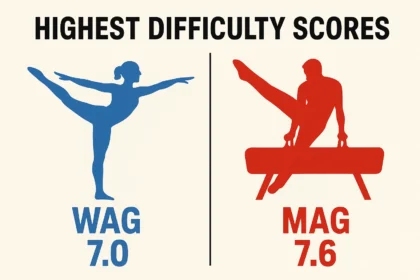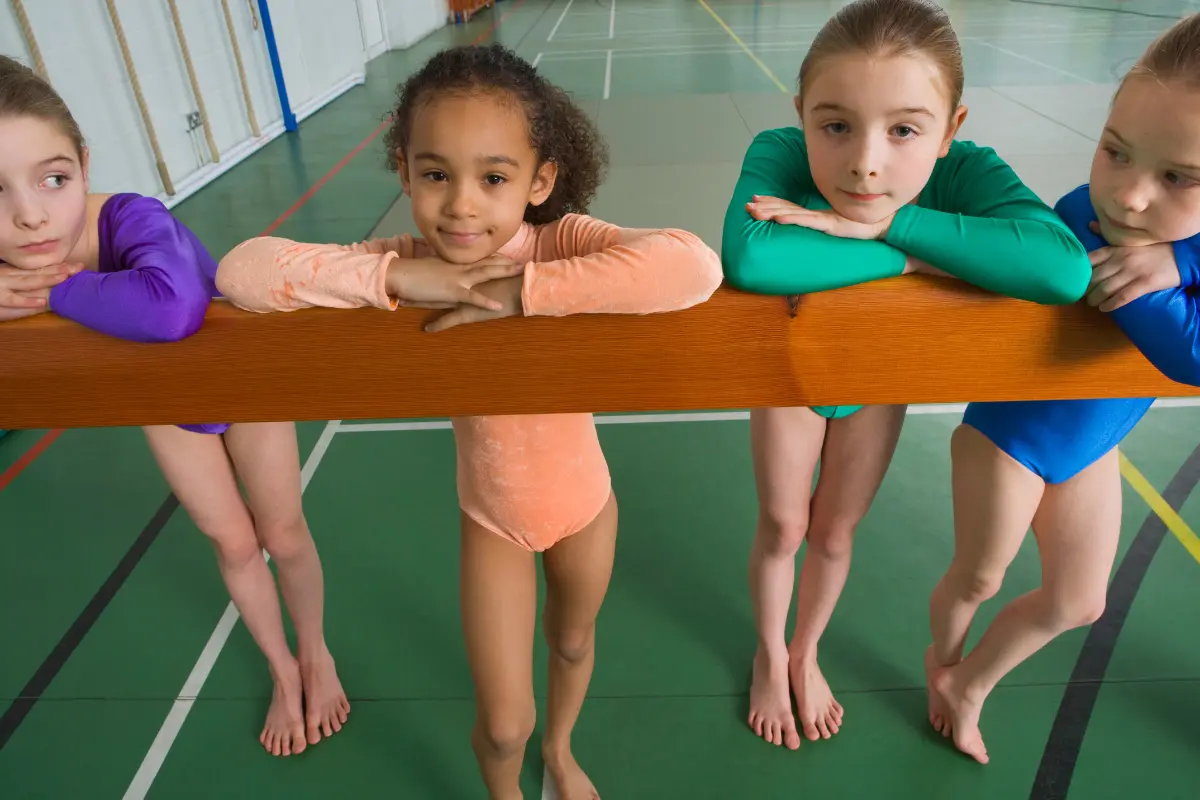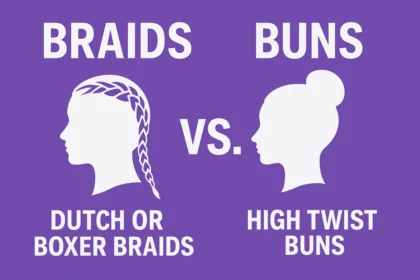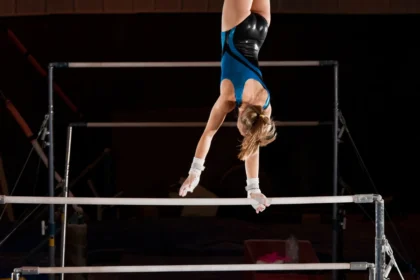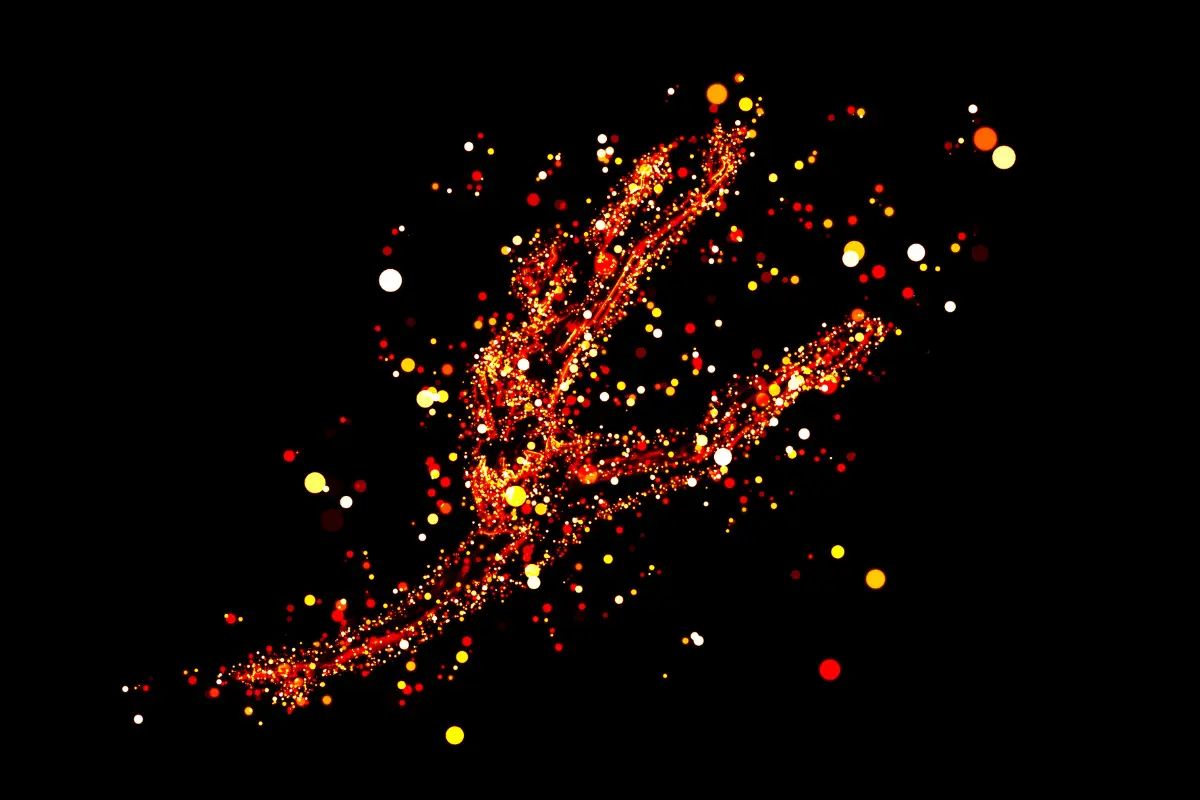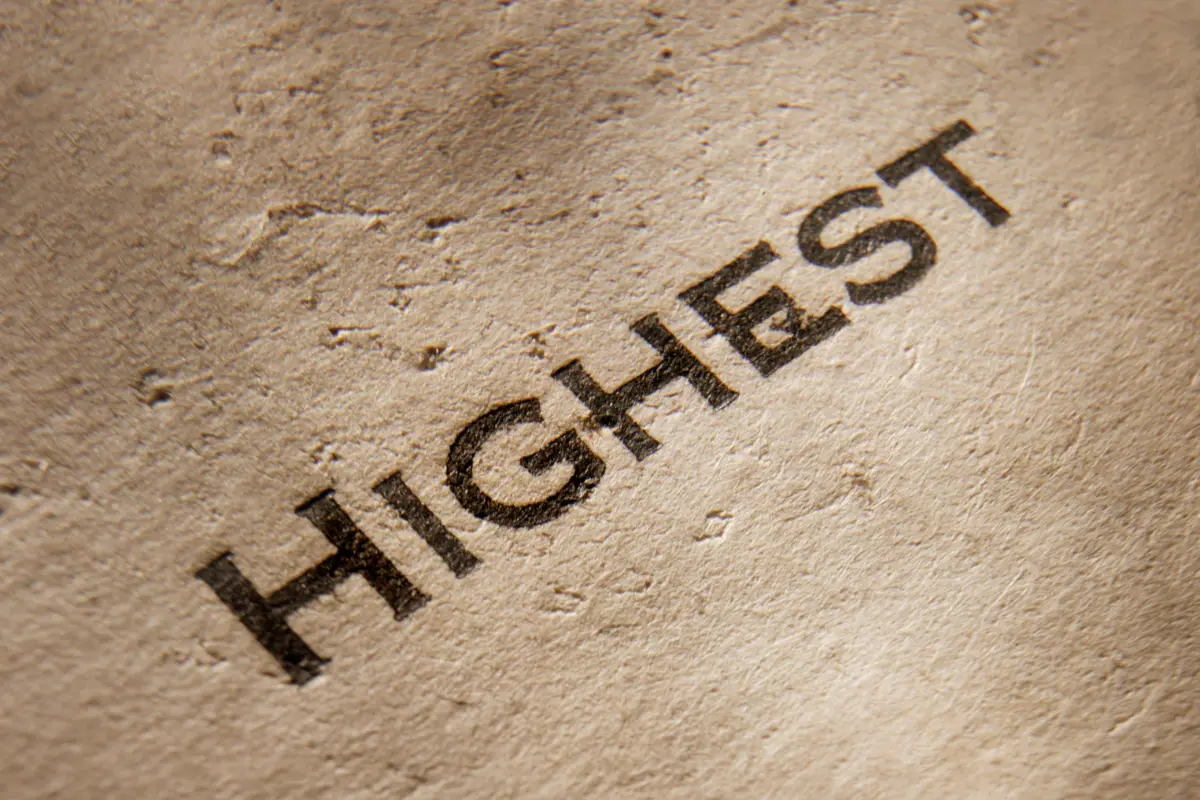The D-score, or Difficulty Score, measures the content of a gymnast’s routine. It includes the hardest skills performed, their connections, and the overall structure of the routine. Unlike the Execution Score (E-score), which starts at 10.0 and deducts points for mistakes, form errors, and falls, the D-score starts at 0.0 and builds up based on the difficulty of elements performed.
The D-score is determined by a panel of judges known as the D-panel, who record the skills and evaluate the difficulty level based on the Code of Points.
The D-score is calculated by evaluating three primary components:
- Difficulty Value (DV) – The sum of the difficulty values of the most challenging elements performed.
- Composition Requirements (CR) – Specific required elements that must be included in the routine.
- Connection Value (CV) – Bonus points awarded for linking difficult elements seamlessly.
Let’s break down how each component contributes to the D-score calculation and how it affects final competition rankings.
Contents
Difficulty Value (DV)
The Difficulty Value (DV) is the cornerstone of a gymnast’s D-score. It reflects the combined difficulty of the most challenging elements performed in a routine. This component rewards athletes for their technical complexity, power, risk, and variety.
What Is the DV?
In every routine, gymnasts perform a series of skills. Each of these skills is assigned a letter rating from A to J, with A being the easiest and J the most difficult. These ratings correspond to point values that contribute to the DV:
| Letter Rating | Point Value |
|---|---|
| A | 0.1 |
| B | 0.2 |
| C | 0.3 |
| D | 0.4 |
| E | 0.5 |
| F | 0.6 |
| G | 0.7 |
| H | 0.8 |
| I | 0.9 |
| J | 1.0 |
How It’s Calculated
- Men’s Artistic Gymnastics (MAG): The 10 highest-valued elements, including the dismount, are counted.
- Women’s Artistic Gymnastics (WAG): The 8 highest-valued elements, including the dismount, are counted.
If a gymnast performs more than the allowed number of counting elements, only the top 10 (MAG) or top 8 (WAG) will be included in the DV. Any additional elements are disregarded for DV but may still impact connection bonuses or execution deductions.
Example (WAG):
A gymnast performs these 8 highest elements:
- F (0.6), E (0.5), D (0.4), D (0.4), C (0.3), E (0.5), B (0.2), A (0.1)
Total DV = 0.6 + 0.5 + 0.5 + 0.4 + 0.4 + 0.3 + 0.2 + 0.1 = 3.0
Highest-Value Elements (2022–2024 Code of Points)
Some gymnastics skills are so difficult that they’re given the highest ratings in the Code of Points. Here are a few of the hardest skills, sorted by event:
🤸♀️ Women’s Artistic Gymnastics (WAG)
Vault:
- Yurchenko Double Pike – J (1.0 points): A powerful vault with a round-off, back handspring, and two backflips in a pike position.
- Amanar – I (0.9): Like a Yurchenko vault but with 2.5 twists in the air.
- Triple-Twisting Yurchenko – H (0.8): A Yurchenko vault with three full twists.
Floor:
- Biles II – J (1.0): Two flips in a layout position with three twists—one of the hardest tumbling passes ever.
- Silivas (Double-Double) – H (0.8): Two flips and two twists in a tuck position.
- Biles (Original) – G (0.7): A double layout with a half twist.
- Triple-Double – G (0.8): Two flips with three twists, performed at high speed.
🤸♂️ Men’s Artistic Gymnastics (MAG)
High Bar:
- Kolman – J (1.0): A high-flying release move with a flip and full twist over the bar.
- Liukin – J (1.0): A double backflip with two twists before regrasping the bar.
- Tkatchev – G (0.8): A big swinging release where the gymnast flies over the bar.
Vault:
- Yurchenko Double Pike – I (0.9): A strong vault with two backflips in a pike shape after a round-off and back handspring entry.
- Tsukahara Double Back – I (0.9): Similar to Yurchenko but with a half-turn entry and two flips.
Floor:
- Triple Twist – H (0.8): A full twisting backflip with three spins.
- Double-Double – G (0.8): Two flips with two twists.
- Double Layout – F (0.7): Two straight (layout) backflips in a row.
- Back Handspring to Full Twist – G (0.8): A flick followed by a full-twisting somersault.
Pommel Horse:
- Handstand on Pommel Horse – H (0.8): Balancing in a handstand on the pommels—very difficult and rare.
This portion of the D-score rewards athletes who push the limits of human movement. However, the DV is only one part of the full D-score—Composition Requirements (CR) and Connection Value (CV) also play essential roles in maximizing a gymnast’s total difficulty score.
Composition Requirements (CR)
Composition Requirements (CR)—also called Element Group Requirements in Men’s Artistic Gymnastics (MAG)—are a key part of how a gymnast’s D-score is calculated. These requirements ensure that routines are not just difficult, but also well-balanced and technically complete.
Each apparatus (except vault) has four required element groups, and gymnasts must include at least one element from each group in their routine. Fulfilling each group earns 0.5 points, for a maximum of 2.0 points added to the D-score.
🤸♀️ Women’s Artistic Gymnastics (WAG)
Each women’s event has its own set of four composition requirements, as defined by the 2022–2024 Code of Points.
Uneven Bars
- A flight element from high bar to low bar
- A flight element from low bar to high bar (or a second release)
- An element with a grip change
- A dismount
Balance Beam
- A leap or jump with at least a 180° split
- A full turn on one foot (minimum 360°)
- An acrobatic series with at least two flight elements
- A dismount from the end of the beam
Floor Exercise
- An acrobatic series with at least two saltos
- A dance passage with two different leaps or jumps
- A turn of at least 360° on one foot
- A salto performed in a different direction than the main acrobatic line (e.g., one forward, one backward)
Vault
- Vault does not include composition requirements. Each vault has a preset D-score based on its difficulty and technique, so no additional CR points are needed.
🤸♂️ Men’s Artistic Gymnastics (MAG)
In men’s gymnastics, these are referred to as Element Group Requirements, and each apparatus has its own four groups that encourage variety in movement types (e.g., swings, travels, strength holds).
Here’s a sample from some MAG events:
Floor Exercise (FX)
- Non-acrobatic element (e.g., strength hold or balance move)
- Acrobatic elements in two directions (forward and backward)
- Element of at least B value
- Dismount or final tumbling pass
Pommel Horse (PH)
- Single leg swings and scissors
- Circle and flairs
- Travel elements
- Dismount
Still Rings (SR)
- Strength or hold elements
- Swing to strength or swing to hold
- Swing through or to handstand
- Dismount
Composition Requirements aren’t just formalities—they’re essential to maximizing your D-score. A gymnast can lose up to 2.0 full points if they fail to include one or more required element groups.
Connection Value (CV)
Connection Value (CV) is the third and final part of the D-score in gymnastics. It is the bonus that gymnasts earn by linking certain skills together without pauses, wobbles, or extra steps in between.
While Difficulty Value (DV) rewards individual elements and Composition Requirements (CR) reward routine structure, Connection Value specifically rewards how elements are combined.
🤸♀️ Connection Value in Women’s Artistic Gymnastics (WAG)
Women’s gymnastics often features a variety of connection bonuses, especially on beam and floor. These can be:
Types of Connections
- Acrobatic Series – e.g., back handspring + layout step-out
- Dance Series – e.g., switch leap + straddle jump
- Mixed Series – e.g., leap + back tuck
Examples of Connection Bonuses:
- Back handspring (B) + layout step-out (D) = +0.2 CV
- Switch leap (C) + straddle jump (C) = +0.1 CV
- Front tuck (D) + wolf jump (C) = +0.1 CV
🤸♂️ Connection Value in Men’s Artistic Gymnastics (MAG)
Men’s events like High Bar, Parallel Bars, and Floor frequently offer connection bonuses, especially when linking difficult elements together in sequence.
Examples:
- Two flight elements on High Bar (e.g., Tkatchev + Gienger) may earn +0.2 or more
- Parallel Bars swing + salto combination = +0.1 to +0.2
- Acrobatic series on Floor (e.g., front layout + double twist) = +0.1 or more
In MAG, the Code of Points often provides connection bonuses for:
- Same-arm or same-grip release moves
- Multiple difficult elements in sequence
- Transitions without extra swings or hand placements
The bonus is only granted if the skills are connected smoothly. If a gymnast breaks the rhythm (for example, by pausing to recover balance), the connection bonus may be reduced or not awarded at all.
Connection Bonus vs. Difficulty Value
To clarify:
- DV counts the top 8 or 10 individual hardest elements.
- CV gives extra credit when those elements are connected smoothly.
A gymnast can technically perform two high-value skills but earn no CV if they don’t connect them properly.
D-Score Example: Women’s Floor Routine (Paris 2024)
At the Paris 2024 Olympics, top gymnasts like Simone Biles built powerful floor routines with high D-scores. Let’s look at a clear example of how a floor D-score of 6.900 might be constructed.
A) Difficulty Value (DV) – 6.1 points
This comes from the 8 hardest skills in the routine (including the dismount). Here’s a sample list:
| Skill | Value |
|---|---|
| Biles II (double layout with 3 twists) | J = 1.0 |
| Double-double (Silivas) | H = 0.8 |
| Double layout | E = 0.5 |
| Front layout + double twist | D = 0.4 |
| Layout step-out | D = 0.4 |
| Switch leap | C = 0.3 |
| Straddle jump | C = 0.3 |
| Double tuck dismount | D = 0.4 |
DV total = 6.1
B) Composition Requirements (CR) – 2.0 points
To earn full CR, the routine must include these 4 required elements:
✅ A tumbling pass with 2 flips
✅ A dance combo (like leap + jump)
✅ A full turn on one foot
✅ Saltos in different directions (e.g., forward + backward)
Each is worth 0.5 → CR total = 2.0
C) Connection Value (CV) – 0.8 points
Bonus points are awarded for connecting skills without a pause. Example combinations:
- Front layout + double twist = +0.2
- Switch leap + straddle jump = +0.1
- Back handspring + layout step-out = +0.2
- Leap + back tuck = +0.1
- Other clean combos = +0.2
CV total = 0.8
✅ Final D-Score
| Part | Score |
|---|---|
| DV | 6.1 |
| CR | 2.0 |
| CV | 0.8 |
| Total | 6.900 |
What Changed for the 2025–2028 Gymnastics Cycle?
Women’s Artistic Gymnastics (WAG)
- The 4 Composition Requirements stay the same.
- On floor, only one dance connection (like leap + jump) can earn a bonus. Even if you do more, only one counts.
- If you end with a D-level or harder dismount, you still get a +0.2 bonus—just like before.
Men’s Artistic Gymnastics (MAG)
- Judges are now stricter when checking if you met all element groups. Missing one means you’ll lose points more easily.
- On high bar, you can now count two big release moves (mo-saltos)—but only if they belong to different groups.
Source: gymnastics.sport






